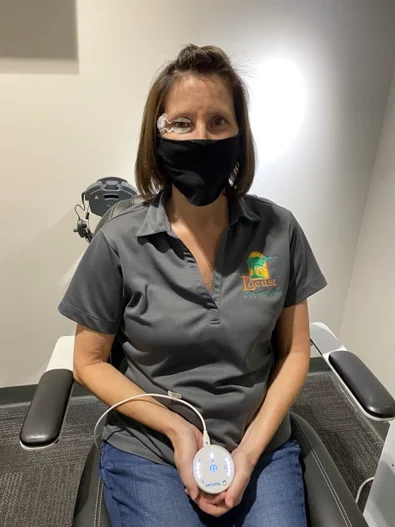Have you noticed your vision blur while reading and need to constantly blink to clear things up? How about burning throughout the day? The culprit is commonly enemy number one in the battle of dry eye—the clogged meibomian gland.
Meibomian glands are oil glands located in both the upper and lower eyelids- about 30 in each location. These glands serve the very important function of secreting oil (aka lipid) into the tears.
Without this oil, the tears break up quickly and evaporate off the eye resulting in blurred vision and burning. Some of the more common causes of Meibomian Gland Dysfunction (MGD) are age, cosmetics, computer use and contact lens wear.
Not long ago, think 15 years or so, we considered dry eye as a lack or deficiency of tears. We handed out artificial tears liberally as treatment. Over the years the coming research has shown that clogged meibomian glands are the leading cause of eye irritation and intermittent blurring.
Fully 90% of dry eye symptoms are the result of MGD. And as concerning as the immediate symptoms are, the future of unchecked MGD is much more concerning. If the meibomian gland is clogged and remains clogged, it will atrophy over time. Unfortunately, once it reaches a severe state of atrophy the gland will be unrecoverable leaving a lifetime of dryness.
That Was then This is Now
In the past we had limited ability to image the meibomian glands but recent imaging systems allow us to visualize how damaged those meibomian glands can become. The diagram to the right shows the appearance of the loss of meibomian glands.

Treatment in the past entailed hot compresses and while useful, didn’t get the job done. The idea is correct- increasing the temperature to soften the oil inside and at the opening the gland allowing the gland to unclog and flow again. However, it takes force to bust through that clogged cap at the opening. We need heat plus force. Newer and more effective techniques have been developed to accomplish this.
There are a number of advanced in-office devices available that have become standard of care, including TearCare (which we use here and pictured in the photo), Lipiflow and iLux. These apply both heat and pressure to the eyelid and meibomian gland. Following the in-office treatment, home maintenance is recommended with heat masks, fish oil (EPA and DHA), oil based artificial tears.

Dietary and overall health considerations are of major importance as well. Hydration (water intake), limiting caffeine to less than 4 cups/day and fighting chronic inflammation within the body with fruits and vegetables while limiting processed foods and sugar intake.
Certain medications also have their place in treatment of meibomian gland dysfunction such as Xiidra, Restasis, hypochlorous acid, azithromycin and doxycycline.
Our top goal is maintaining good health and comfort of our patient’s eyes for the entirety of their life and detecting and treating problems of the meibomian gland are key.










